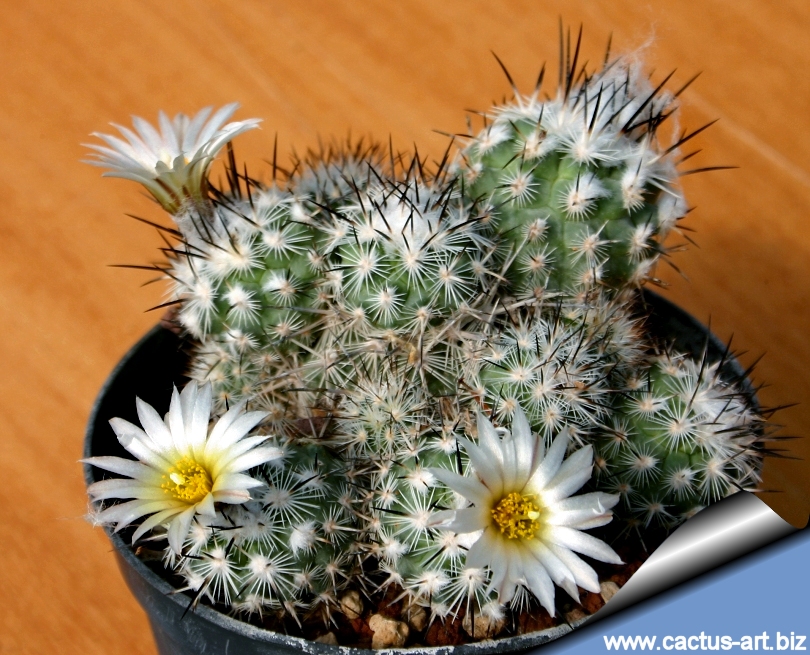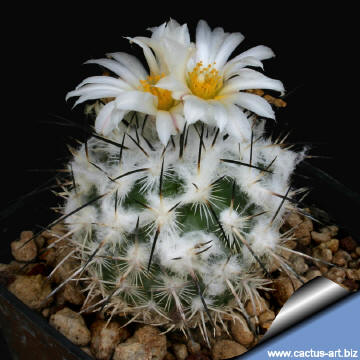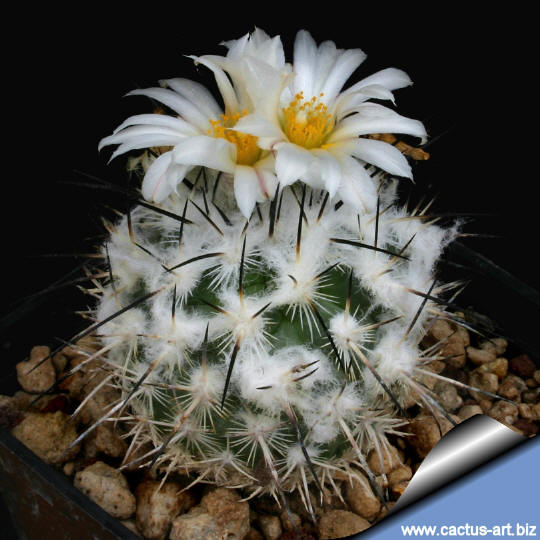|
|
|

Turbinicarpus viereckii var. major L730 fma. Lazaro
Cardenas, S.L.P. Mexico, Altitude: 1500 m.
|
|
Description:
Usually solitary
occasionally clustering.
Stem: Dull green or
blue-green,
globose to slightly cylindrical 3-5 (-12cm) tall, 3-5(-7) cm in diameter
apex with with very woolly
top.
Ribs: 15 to 18 ribs divided in tubercles.
Tubercles: 6 mm long rhomboidal conical.
Central spines: 3 to 7 white with black tips in a cross like
formation, 2-4 cm long.
Radial spines: 13 to 16 rigid white translucent, some with brown
tips, 0.8-1.3 cm long.
Root: Swollen bundled.
Flowers: White
(sometime with a pink midstripe),
3 cm long, 3,5 mm broad
Fruits: Greenish-magenta.
|
 |
 |
|


Advertising
|
|
|
|
|
Family:
Cactaceae (Cactus
Family)
Scientific name:
Turbinicarpus viereckii
var. major
(Werderm.) V.John & Riha
Werdermann, Monatsschrift der
DKG, 3:175, 1931
Origin: Mexico (municipalities of
Guadalcazar in the state of San Luis Potosi and in Nuevo León)
Conservation status: Listed in
CITES appendix 2.
Synonyms:
-
Turbinicarpus viereckii ssp.
major C. Glass and R.A. Foster
Published in: CASJ (US) Vol 50 (6): 285, 1978
-
Echinocactus viereckii var. major
-
Thelocactus viereckii var. major
-
Gymnocactus viereckii var. major
-
Neolloydia viereckii var. major
-
Pediocactus viereckii var. major

|
|
|
|
Cultivation: It’s a fairly easy and robust species to cultivate,
but very slow growing. It needs a very well-drained soil, and requires
strong sun to part sun to keep the plant compact and low
and to develop a good spinal growth. Waterings should be rather
infrequent to keep the plant compact, and avoid its becoming excessively
elongated and unnatural in appearance. Furthermore it has
a tap root, and watering it properly is often difficult, because it
tends to crack open or rot if over-watered. Careful watering away
from the body of the plant will allow the areoles to keep their wool.
Keep dry in winter, or when night temperatures remain below 10° C. It
is hardy to -4°C for a short period. Assure a good ventilation.
Reproduction: From seed, since
the plant rarely produces plantlets, or
grafted.
Photo of conspecific taxa, varieties,
forms and cultivars of Turbinicarpus viereckii:
|
|